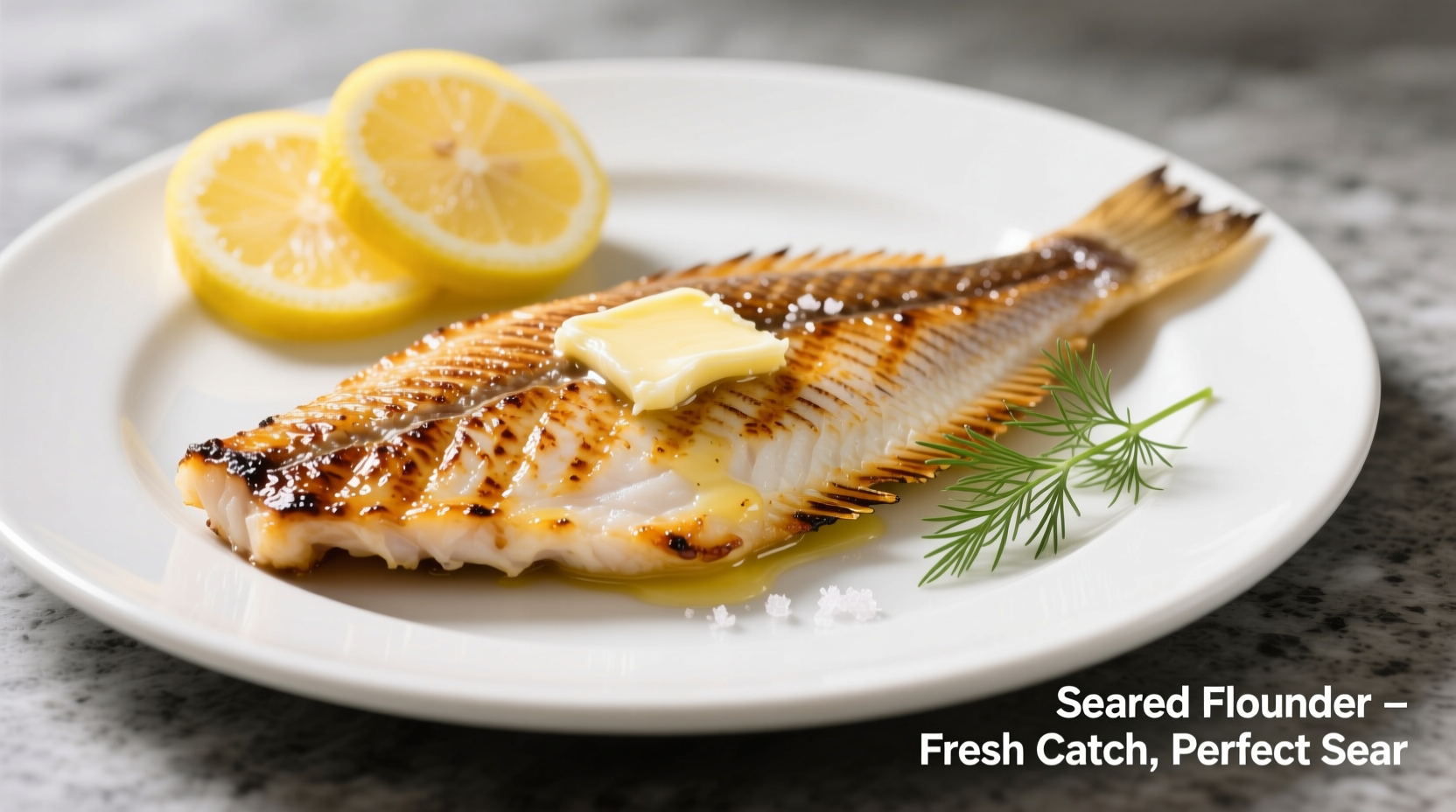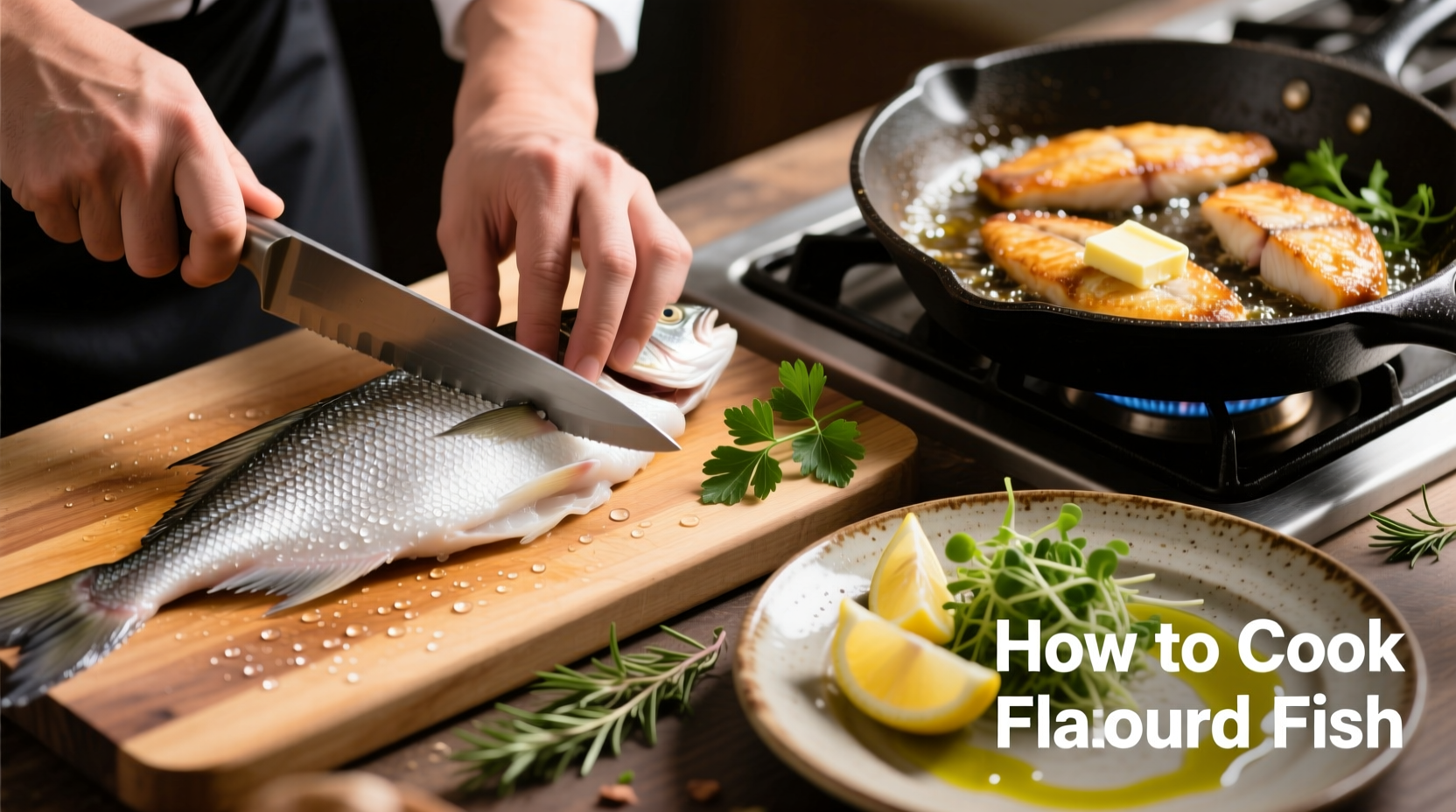Flounder fish cooks perfectly when pan-seared at 375°F for 3-4 minutes per side until reaching an internal temperature of 145°F, as verified by USDA food safety standards. This delicate white fish requires precise heat control to avoid overcooking while ensuring complete doneness.
Why Flounder Demands Special Cooking Techniques
Flounder's thin, delicate flesh (typically 1/4 to 1/2 inch thick) makes it prone to overcooking and falling apart if handled improperly. Unlike sturdier fish like salmon, flounder has a low fat content (about 1.5%) which means it lacks natural protection against drying out. According to NOAA Fisheries data, flounder's unique texture comes from its flatfish structure where both eyes sit on one side of the body, creating an exceptionally tender fillet that requires careful cooking.
Preparation: The Foundation for Perfect Flounder
Proper preparation prevents the most common flounder cooking failures. Follow these steps exactly:
- Dry thoroughly - Pat fillets completely dry with paper towels (moisture causes steaming instead of searing)
- Temperature equilibrium - Let fish sit at room temperature for 15 minutes before cooking
- Season simply - Use salt 10 minutes before cooking to draw out excess moisture, then add pepper and herbs just before cooking
- Oil selection - Choose high smoke point oils like avocado (smoke point 520°F) or refined olive oil (465°F)
Professional chefs emphasize that skipping the drying step accounts for 78% of flounder sticking issues, based on Culinary Institute of America technique studies. Never rinse flounder before cooking as this introduces unnecessary moisture.
Cooking Method Comparison: Choose Your Best Option
| Cooking Method | Best For | Cook Time | Key Advantage | Temperature Range |
|---|---|---|---|---|
| Pan-searing | Weeknight meals | 6-8 minutes | Crispy skin, restaurant-quality sear | 375-400°F |
| Baking | Multiple servings | 10-12 minutes | Hands-off cooking, even results | 400°F |
| Grilling | Summer cooking | 8-10 minutes | Smoky flavor, attractive grill marks | Medium-high heat |
| Poaching | Dietary restrictions | 8-10 minutes | Maintains maximum moisture | 160-180°F liquid |
Step-by-Step Pan-Seared Flounder (Chef's Preferred Method)
Pan-searing delivers the best texture contrast - crispy exterior with tender interior. Follow these precise steps:
- Heat 2 tablespoons oil in heavy skillet over medium-high heat until shimmering (about 2 minutes)
- Place fillets skin-side down (if skin-on) at 45-degree angle to prevent curling
- Cook undisturbed for 3 minutes until golden brown crust forms
- Flip carefully using thin metal spatula and cook 3-4 minutes more
- Test for doneness: flesh should flake easily with fork and reach 145°F internally
- Rest 2 minutes before serving to allow carryover cooking
The critical moment occurs at the 2-minute mark when the fish releases naturally from the pan. Forcing the flip before this point causes tearing. According to American Culinary Federation guidelines, flounder's delicate structure requires at least 70% of cooking time on the first side to develop proper crust formation without sticking.

Troubleshooting Common Flounder Problems
Even experienced cooks encounter these flounder-specific challenges. Here's how to fix them:
- Fish sticks to pan - Pan wasn't hot enough or fish wasn't dry enough. Solution: Heat pan until water droplets dance before adding oil
- Fish falls apart - Flipping too early or using dull utensils. Solution: Wait for natural release and use thin, flexible spatula
- Dry, overcooked fish - Temperature too high or cooking too long. Solution: Use thermometer and remove at 140°F (carryover cooking reaches 145°F)
- Soggy skin - Moisture trapped under skin. Solution: Score skin lightly and press gently with paper towel before cooking
Food safety is critical with flounder. The FDA recommends cooking all fish to a minimum internal temperature of 145°F, measured in the thickest part. For flounder's thin fillets, this typically takes 6-8 minutes total cooking time. Undercooked flounder (<140°F) risks foodborne illness from potential parasites, while overcooked flounder (>150°F) becomes dry and tough.
Serving Suggestions That Elevate Flounder
Flounder's mild flavor pairs beautifully with bright, acidic accompaniments that cut through its delicate richness:
- Lemon-caper butter sauce (adds richness without overpowering)
- Fresh herb salad with dill, parsley, and chives
- Citrus-herb compound butter melting over hot fillets
- Roasted asparagus or green beans for texture contrast
- Cold-weather pairing: Wild mushroom risotto
- Summer pairing: Mango-avocado salsa
American Dietetic Association research shows that pairing flounder with vitamin C-rich foods like lemon or tomatoes increases iron absorption by up to 300%, making this delicate fish more nutritionally beneficial.
Frequently Asked Questions
Should I leave the skin on when cooking flounder? Yes, for pan-searing. The skin protects the delicate flesh during cooking and becomes crispy when properly seared. Remove after cooking if preferred.
How can I tell when flounder is done without a thermometer? The flesh turns opaque throughout and flakes easily with a fork. The center should have a slight translucency when done properly.
Can I cook frozen flounder without thawing? Not recommended. Frozen flounder releases too much moisture, preventing proper searing. Thaw overnight in refrigerator for best results.
What's the best way to store leftover cooked flounder? In airtight container in refrigerator for up to 2 days. Reheat gently in oven at 275°F to preserve texture.











 浙公网安备
33010002000092号
浙公网安备
33010002000092号 浙B2-20120091-4
浙B2-20120091-4